NREL and MSU Denver Partnership Elevates Colorado High School Science Bowl to New Heights
As the sun shone over the campus of Metropolitan State University in Denver, a buzz of anticipation filled the air, punctuated by the excited chatter of young minds, eager to test their knowledge.
On March 9, 2024, intellect was put to the test and curiosity crackled like electricity. Amid the hum of excitement and nerves, there was more than just the clash for victory; there was a palpable sense of discovery, a vibrant celebration of all things science, technology, engineering, and math (STEM). From the intricacies of biology to the mysteries of physics, each question posed not only sparked debate but also ignited a passion for learning. As the final rounds drew near, the intensity of the competition simmered, and the stage was set for a showdown of epic proportions.
When the dust had settled, Fossil Ridge High School emerged victorious in the 2024 Colorado High School Science Bowl, continuing its winning streak for the fourth year in a row by narrowly besting second-place finisher Stargate Charter High School. The win sends students from Fossil Ridge to represent the state of Colorado at the U.S. Department of Energy's (DOE’s) National Science Bowl in Washington, D.C., and compete for the national title against students from 64 high school regions.
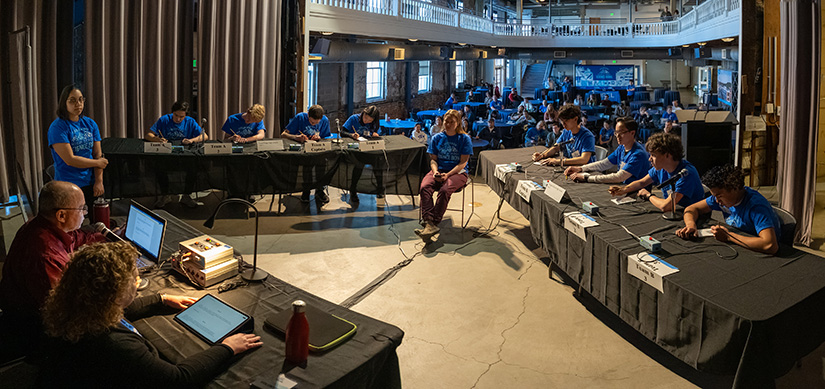
Fossil Ridge High School and Stargate Charter High School compete in the final round of the Science Bowl. DOE Principal Deputy Under Secretary for Science and Innovation Derek Passarelli (left, in red shirt) reads questions to the students. Photo by Paul Tantrow, Altitude Arts
In 1991, DOE created the National Science Bowl to encourage students to excel in STEM and to pursue careers in these fields. More than 330,000 students have participated in the National Science Bowl, and it remains one of the nation’s largest science competitions. DOE's Golden Field Office once again served as one of the major sponsors of this year's event, along with DOE’s National Renewable Energy Laboratory (NREL) and the new host, Metropolitan State University.
“If we have a chance on this planet, the students in this room are the ones who are going to make a difference,” DOE Principal Deputy Under Secretary for Science and Innovation Derek Passarelli said. “When you get upset about climate events or things that are going on, but then look at the kids in this room and what they did today … there is no doubt that they are the future, and I’m feeling pretty strong about the future.”
The Colorado High School Science Bowl had its 34th annual showdown on March 9, 2024, but this time, it took place on the campus of Metropolitan State University (MSU) in Denver. Departing from its usual high-school setting, this year's event was a unique experience for the participating teams and spectators alike. This move marks the dawn of a new era for the science competition, thanks to a strategic partnership between NREL and MSU Denver, that aims to revolutionize the event's landscape and foster a deeper engagement in STEM fields among high school students.
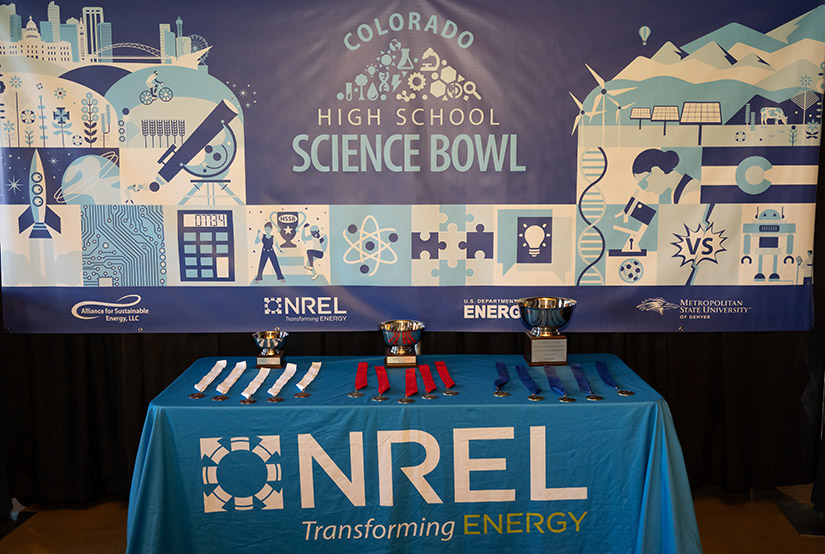
The spread of trophies and ribbons awaiting the top three teams are displayed in the Metropolitan State University Tivoli Student Union. Photo by Paul Tantrow, Altitude Arts
Azure Avery, a professor of physics at MSU Denver and a joint appointee at NREL, said she hopes the partnership fosters opportunities for all students to become more involved in the world of science.
“I would like to have a network and a strong partnership for the students, as well as for the scientists and researchers,” Avery said. “Even if you wanted to look at the history of renewable energy or something, that would be open to different types of students that weren't necessarily in STEM fields.”
The genesis of this partnership sprang from a collective aspiration to infuse fresh energy into the Science Bowl, leveraging the dynamic environment of a university campus to spark curiosity and ambition in the next generation of scientists and innovators.
Tom Mason, NREL's STEM education outreach coordinator, underscored the importance of this shift, emphasizing the desire to offer students a unique glimpse into the world of higher education.
“They’re already high school students; they’re familiar with what it’s like to walk through the halls of a high school,” Mason said. “Having it at a local university gives them a unique experience that they may not have otherwise.”
Inspiring and Connecting Future STEM Leaders
The partnership not only brought the competition to a new environment but also served a broader purpose: to inspire high school students and ignite their interest in continuing their path down STEM fields. By hosting the event on a college campus, organizers hoped to give participants a taste of higher education and expose them to potential career paths in science and technology.
Daniel Dupuis has volunteered as the science judge and moderator for the Science Bowl for the past seven competitions. He does chemistry research at NREL and is currently researching sustainable aviation fuels. He supports the move to MSU Denver.
“I think it'll be nice to have it on a college campus for the students,” Dupuis said, “because they’ll get that feel of, ‘This is what’s next; this is what a college campus is like.’”
He continued, “And it makes it a little more exciting for the teams who are participating because we're not hosting at the same school that they see every day. It's a new location for everybody.”
Liz Ware has been a volunteer for the Science Bowl since 2014. At NREL, she works in the Bioenergy Sciences and Technology Directorate. Ware said she is enthusiastic about the competition and that she loves seeing the students get excited about science.
“They are celebrating STEM knowledge and abilities,” Ware said, “and I don't think there's enough of that in this world.”
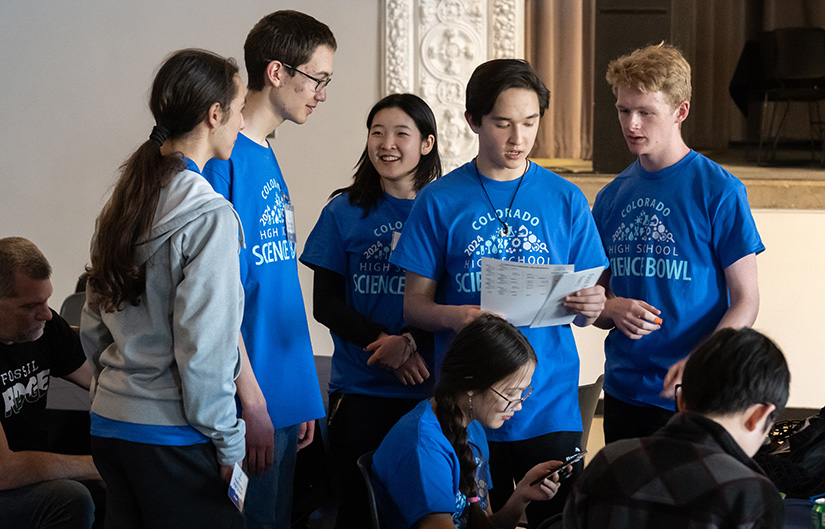
Fossil Ridge High School students Quentin Perez-Wahl, Jackson Dryg, Kary Fang, Colin Magelky, and Logan Bowers chat in between rounds and look at standings before the final rounds. Photo by Paul Tantrow, Altitude Arts
The relocation to MSU Denver not only injected a new spirit into the competition but also heralded a change in dynamics.
Jessica Olstad is currently the lead engineer for thermochemical process integration at NREL; she has volunteered for the Science Bowl for about 10 years.
“The change made the competition seem more official. … Moving it to a college gives the students a feel that this competition, and ultimately the world, is bigger than each of them individually or on their local team,” Olstad said. “Allegorically, ‘You’ll be placed outside your comfort zone, and you’ll need to find your way within it.’ This will give them a small taste of that.”
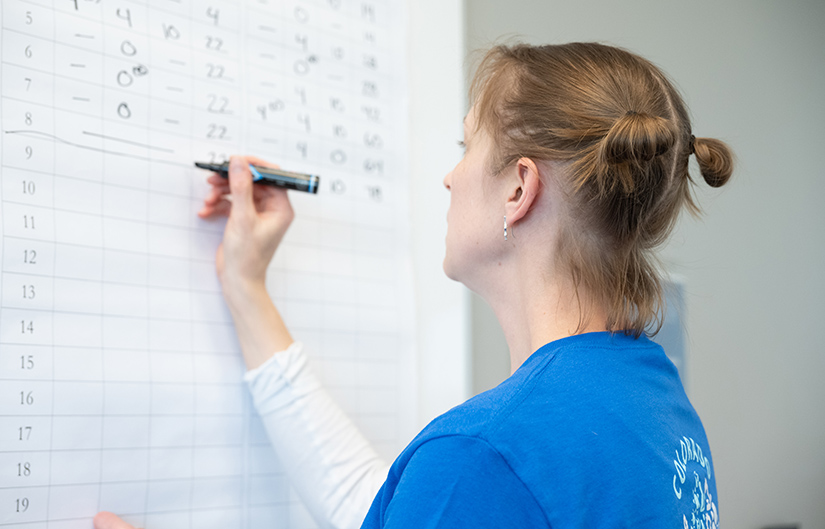
Enriching Activities and Informative Workshops
Moreover, the event transcended the realms of mere competition, offering a rich tapestry of STEM-related activities and exhibits. From captivating workshops to enlightening presentations, participants and attendees alike were treated to an immersive educational experience. There were volunteers from MSU’s aerospace and engineering department, as well as other STEM departments running science demos and workshops throughout the day.
There was a laser maze for the students to navigate with mirrors and other reflective materials, as well as a magnetic induction racetrack, among other activities. The aerospace engineering sciences building at MSU Denver opened its doors, showcasing its additive manufacturing laboratory, where students marveled at the intricacies of robots, 3D printing, computer numerical control (CNC) machines, and augmented reality. They could even use a laser engraver to personalize their own key chain.
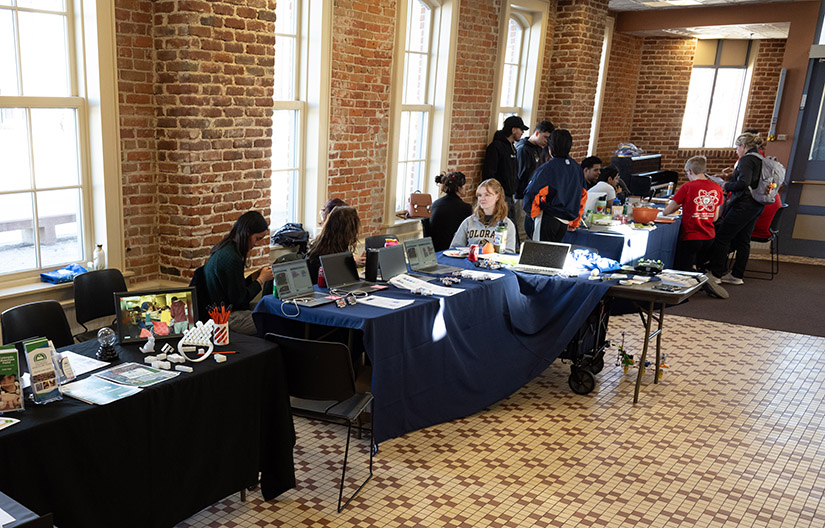
Ware said she hopes the students are inspired by the Science Bowl and, that “it gives them achievements to be proud of. … It's something they work for — they practice, and they train; it's a goal that they can set and achieve. … If they can keep on doing that, it may keep them motivated down the road.”
Olstad said that the Science Bowl is important because “STEM careers are essential for making the world function. I want students to walk away with the knowledge that STEM careers are attainable, despite any misconceptions that STEM fields are difficult to get into. … It gives the students the opportunity to realize that if STEM folks can do stuff to change the world, so can they.”
Dupuis echoed the importance of having high school students be involved in STEM activities like the Science Bowl and added that it is “a great opportunity for them to brush shoulders with folks who work in a field that they may end up working in down the road and … see that we're just average folks like anyone else.”
Congratulations Colorado High Schoolers
Twenty-five teams from across the state competed in this year's science extravaganza. Each team brought a cadre of specialized minds and were ready to tackle questions spanning various scientific disciplines.
The full roster of teams:
- Castle View High School
- Centennial High School Pueblo (two teams)
- Cherry Creek High School (two teams)
- Fairview High School
- Fort Collins High School (two teams)
- Fossil Ridge High School (two teams)
- Lakewood High School
- Liberty Common High School
- Loveland High School
- Merit Academy (two teams)
- Poudre High School
- Ridgeview Classical Schools
- Rock Canyon High School (two teams)
- Rocky Mountain High School
- Severance High School (two teams)
- Smoky Hill High School (two teams)
- Stargate Charter High School.
As the day unfolded on the campus of MSU Denver, the Colorado High School Science Bowl epitomized a convergence of intellectual prowess, inspiration, and camaraderie. Amid the backdrop of a university setting, students embarked on a journey of discovery, laying the foundation for a future fueled by curiosity and innovation.
Fossil Ridge’s coach, Brian Riedel, spoke on his teams’ strategy and made his teams’ passion for STEM clear.
“They come in on Friday afternoons and basically compete against each other at lunch and after school,” Riedel said. “These guys are all self-studiers. … I trust them to do their own thing. If I was any more involved, we wouldn’t be anywhere near where we are.”
While Fossil Ridge High School would come to be crowned state champion, the passion for STEM was apparent from every team. Leo Fernandes, the team captain of the runner-up team, Stargate Charter High School, encouraged other students who are interested in sciences to get involved in any way they can.
“People are probably nervous at first, but once you find that topic you’re interested in, learn everything you can about it. … All STEM disciplines are fueled by curiosity, and it’s fun to be curious,” Fernandes said.
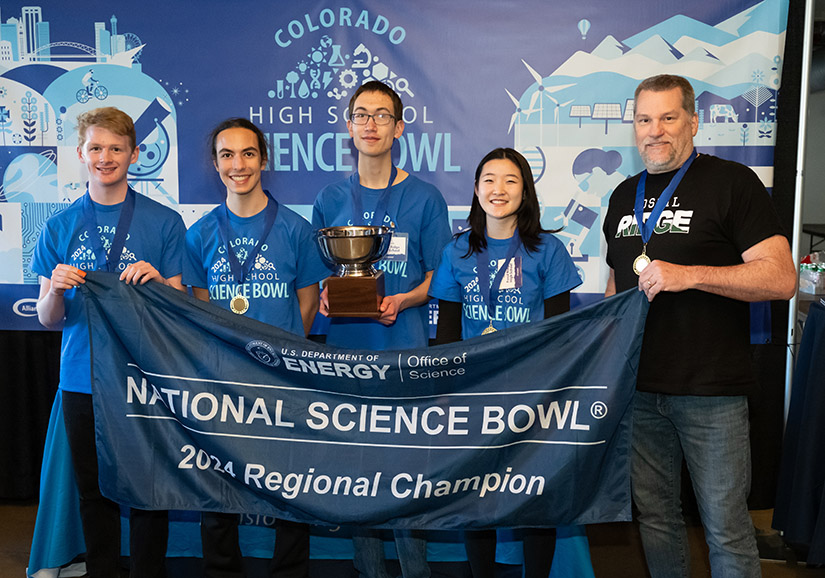
For the fourth consecutive year, Fossil Ridge High School is the winner of the Colorado High School Science Bowl. From left to right are Logan Bowers, Quentin Perez-Wahl, Jackson Dryg, Kary Fang, and coach Brian Riedel. The students move on to represent Colorado at the U.S. Department of Energy’s National Science Bowl in Washington, D.C. Seventeen schools from around Colorado competed in the event. Photo by Paul Tantrow, Altitude Arts
After their win, Fossil Ridge’s team captain, Jackon Dryg, said that apart from Wikipedia rabbit holes, Quizlet, and AP classes in school, the tool they used the most to prepare for their Science Bowl victory was curiosity.
“We find certain topics that some of us might be interested in and just dive into it and study it more and more until we find the next topic that spikes our curiosity,” Dryg said. “Then we learn everything there is to about that one.”
The partnership between NREL and MSU Denver not only redefined the landscape of the Science Bowl but also underscored a shared commitment to nurturing the next generation of STEM leaders.
Amid the excitement of the day, one thing remained certain: The High School Science Bowl continues to serve as a beacon for budding scientists and innovators, propelling them toward a future fueled by curiosity and discovery.
When asked what their strategy for nationals is, Fossil Ridge High School’s winning team unanimously said: “Do what we always do and have fun.”
Last Updated May 28, 2025
